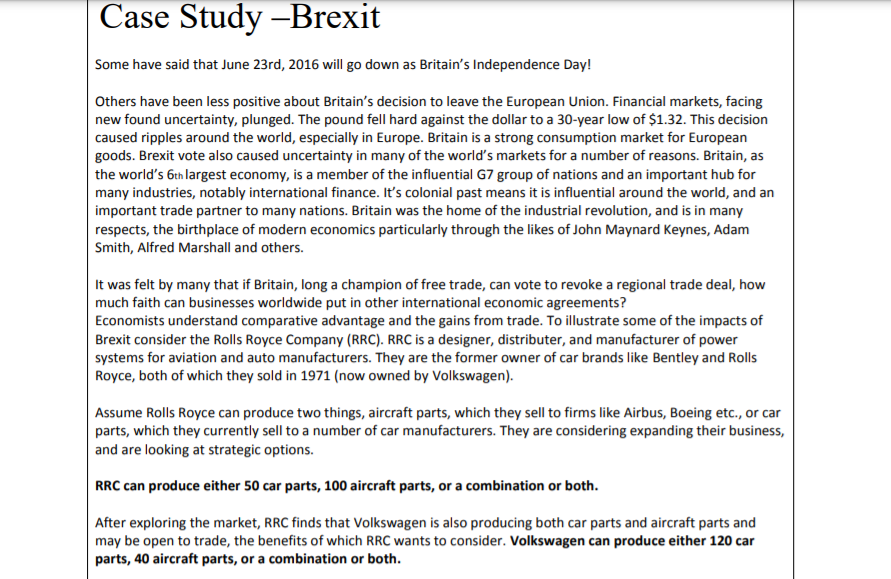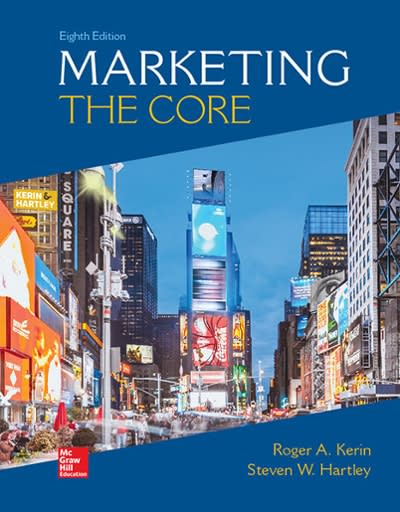CASE STUDY AND QUESTION BELOW
Case Study -Brexit Some have said that June 23rd, 2016 will go down as Britain's Independence Day! Others have been less positive about Britain's decision to leave the European Union. Financial markets, facing new found uncertainty, plunged. The pound fell hard against the dollar to a 30-year low of $1.32. This decision caused ripples around the world, especially in Europe. Britain is a strong consumption market for European goods. Brexit vote also caused uncertainty in many of the world's markets for a number of reasons. Britain, as the world's 6th largest economy, is a member of the influential G7 group of nations and an important hub for many industries, notably international finance. It's colonial past means it is influential around the world, and an important trade partner to many nations. Britain was the home of the industrial revolution, and is in many respects, the birthplace of modern economics particularly through the likes of John Maynard Keynes, Adam Smith, Alfred Marshall and others. It was felt by many that if Britain, long a champion of free trade, can vote to revoke a regional trade deal, how much faith can businesses worldwide put in other international economic agreements? Economists understand comparative advantage and the gains from trade. To illustrate some of the impacts of Brexit consider the Rolls Royce Company (RRC). RRC is a designer, distributer, and manufacturer of power systems for aviation and auto manufacturers. They are the former owner of car brands like Bentley and Rolls Royce, both of which they sold in 1971 (now owned by Volkswagen). Assume Rolls Royce can produce two things, aircraft parts, which they sell to firms like Airbus, Boeing etc., or car parts, which they currently sell to a number of car manufacturers. They are considering expanding their business, and are looking at strategic options. RRC can produce either 50 car parts, 100 aircraft parts, or a combination or both. After exploring the market, RRC finds that Volkswagen is also producing both car parts and aircraft parts and may be open to trade, the benefits of which RRC wants to consider. Volkswagen can produce either 120 car parts, 40 aircraft parts, or a combination or both..-. ......3...,... .-. my..- QUESTION 1: Represent cars parts on the yaxis and aircraft parts on the x-axis. Draw RRC and Volkswagen's PPF on the diagram below. Assume both PPFs are linear. For RRC, what is the marginal opportunity cost of 1 aircraft part? For RRC, what is the marginal opportunity cost of 1 car part? For Volkswagen, what is the marginal opportunity cost of 1 aircraft part? For Volkswagen, what is the marginal opportunity cost of 1 car part? Who has the absolute advantage in the production of aircraft parts? Why? Who has the absolute advantage in the production of car parts? Why? Assume each rm needs 20 aircraft parts and cannot trade. How many car parts is each able to produce after making 20 aircraft parts? What is the total amount of car parts aircraft parts on the PPF. What is the total number of car parts produced now








